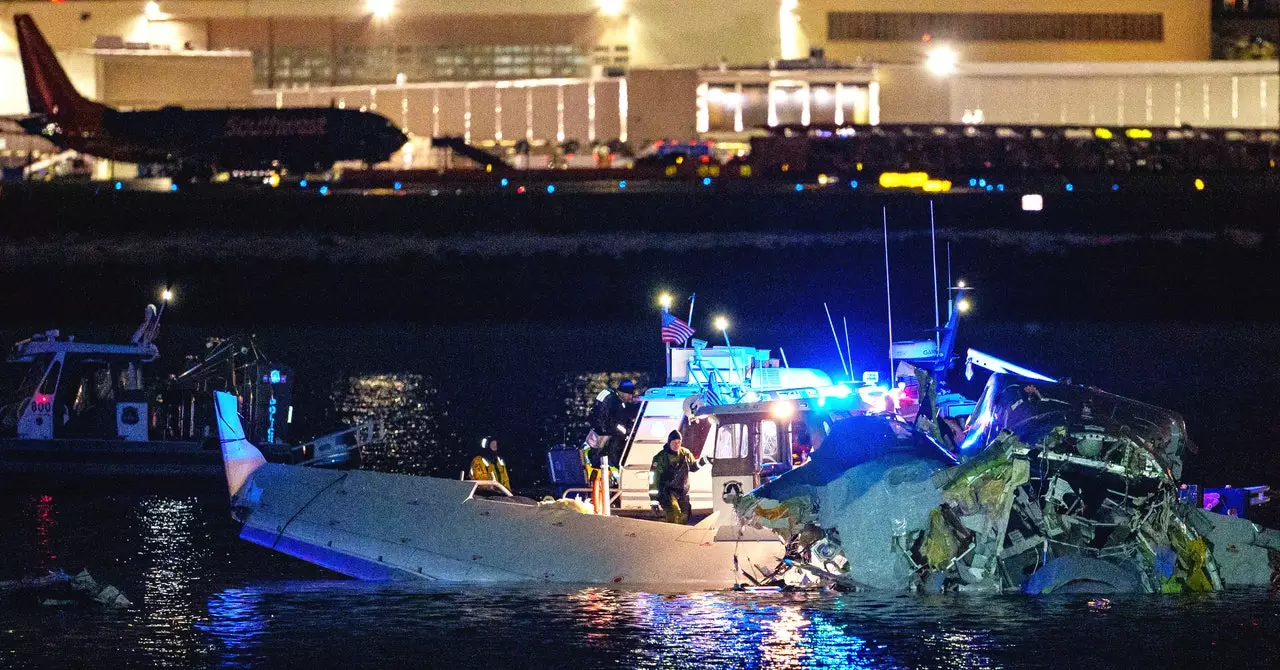On a fateful Wednesday evening, a devastating air crash occurred, involving a military helicopter and a passenger airplane that plunged into the Potomac River near Washington, D.C. This tragic incident marks a significant moment in aviation history, as it stands out as the first catastrophic air crash in the United States in 16 years. Initial investigations suggest human error may be a contributing factor, sparking discussions around broader issues of air traffic management and communication protocols between military and civilian aviation. This scenario raises critical questions about the safety measures in place and the efficiency of air traffic operations in contemporary airspace.
The collision transpired when an Army UH-60 Black Hawk helicopter collided with the rear of a Bombardier CRJ-700 jet, operated by PSA Airlines for American Airlines. The passenger flight, approaching Reagan National Airport with 64 individuals onboard, appeared to have been moments away from landing when the tragedy unfolded. Eyewitness accounts and footage depict a harrowing scene, as both crafts disintegrated upon impact and plummeted into the shallow, icy waters of the Potomac. Early recovery efforts by police boats yielded 27 bodies, emphasizing the grim reality of the situation. Historical context also weighs heavily on this incident, recalling the Colgan Air crash of 2009, which remains the last air tragedy of comparable severity in the U.S.
A major focus of the ongoing investigation is evaluating the human factors contributing to the disaster. Statistically, a staggering 80% of aviation incidents worldwide involve human error, leading experts to examine the specific circumstances surrounding this horrific event. Marco Chan, an aviation expert, posits that both safety protocols and human oversight may have fallen short. Furthermore, in the wake of the pandemic, although passenger numbers have surged, staffing within aviation operations has not managed to keep pace, raising concerns over the adequacy of air traffic controllers and pilots. This mismatch in workforce capacity may have exacerbated existing vulnerabilities within the aviation system.
Air traffic control’s role during the lead-up to the crash comes under scrutiny, particularly concerning its communication with the military helicopter. Reports indicate that air traffic control requested the helicopter confirm whether it had sighted the approaching passenger plane and instructed it to pass behind the CRJ-700, which retained the right of way unless it was engaged in a critical military operation. However, details remain murky regarding the helicopter’s response to these directives. The complex layers of communication in aviation are crucial, especially when military and civilian operations intersect.
Furthermore, the incident raises the possibility of an elusive communication breakdown. Military aircraft sometimes operate on distinct radio frequencies, which could hinder passenger aircraft from receiving vital updates about their surroundings. If air traffic communications were congested, critical messages may not have reached all parties involved, increasing the risk of collision.
This tragedy encapsulates the urgent need for refining safety standards and communication protocols in the aerospace domain. As investigations continue, lessons must be learned to prevent future episodes of such catastrophic proportions. A comprehensive audit of current practices, including pilot training and air traffic control operations, may provide insights into where systems failed and how they can be reinforced.
Moreover, addressing the staffing challenges within the aviation workforce is imperative. As the industry rebounds from the pandemic’s impacts, ensuring adequate training and hiring of air traffic controllers and pilots must be prioritized. Proactive measures will be vital in restoring public trust in air travel safety.
The collision of the military helicopter and passenger airplane over the Potomac serves as a stark reminder of the complexities of aviation operations. As investigators sift through the wreckage for answers, the focus must remain on preventing future tragedies and protecting those who rely on air travel for safety and security. The ramifications of this disaster highlight the pressing need for systemic change within aviation protocols, urging stakeholders to respond with robust strategies to safeguard the skies.

